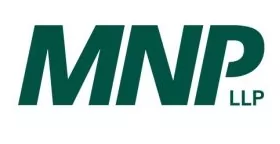Food and beverage manufacturing is one of the most important sectors in Canada and the rest of the world, both in terms of economic value and jobs. Although appealing at first glance, the sector has become highly competitive and it is becoming increasingly difficult for retailers, distributors and processors to carve out a space for themselves. Major players who achieved strong growth did so primarily via acquisitions, which has accentuated retail concentration and changed the balance of power; the market is in flux and the competition has become anomalous.
This is the first instalment in a series of blogs focused on the dynamics of the food and beverage sector and the balance of power between the players, which will offer a better understanding of the stakes for all parties involved. The goal of these blogs is to ensure food and beverage manufacturers can adopt a clearer vision of their sector to make more strategic decisions and ultimately, achieve their business objectives.
Food retailer context and challenges
The retail market for food distribution has become strongly concentrated in the hands of a few very large players. This same phenomenon is being observed all over the world.
Canada has three main food retailers: Metro ($11 billion), Sobeys ($17 billion) and Loblaws-Provigo ($32 billion). These retailers are engaged in fierce competition, accentuated by the arrival of retail giants such as Walmart, Costco and Target to the food market, none of whom have traditionally featured food as their core product.
| Retailer | Location | # of stores | Sales |
| Loblaws | Canada, United States | 1,000 outlets | $32 billion |
| Sobeys | Canada | 1,570 outlets | $17 billion |
| Metro | Quebec, Ontario | 1,336 outlets | $11 billion |
In global rankings of the world's top 250 retailers, Loblaws is in 32nd place, Sobeys is 53rd and Metro is 83rd. It is interesting to note the rankings of two of these large retailers, namely Sobeys and Metro, who serve but a single territory, i.e. Canada, with a population of only 34 million, and of Loblaws, whose operations extend to only two territories, namely Canada and the United States. This clearly illustrates how the Canadian retail food market is dominated by a small number of retailers.
| Retailer | Countries served | 2012 ranking | 2008 ranking |
| Walmart | 28 | 1 | 1 |
| Loblaws | 2 | 32 | 37 |
| Costco | 9 | 3 | 8 |
| Target | 12 | 10 | 10 |
| Sobeys | 1 | 53 | 67 |
| Couche-Tard | 19 | 31 | 50 |
| Metro | 1 | 83 | 81 |
The world's top 250 retailers
Competition also comes from, albeit to a much lesser extent, specialized stores, convenience stores, pharmacies and dollar stores. Taken together, these account for roughly 15-20% of the market. As a group, the large retailers therefore control more than 80% of the total market.
Demand
The demand for food and beverage products depends in large part on consumers' disposable income, the consumer confidence index, interest rates and demographic growth. Yet over the past five years, Canada's population has grown by only 4%. Income, on the other hand, has seen an average annual growth rate of less than 2% since 2007. In Quebec, even though the cost of groceries has increased by 25% over the past 10 years, it has decreased in terms of proportion of income spent on food, from 15.2% to 12.7%.
In a market exhibiting such weak growth, consolidation and maturity, the battle amongst retailers is fierce.
As evidenced over the final months of 2013, Metro lost market share, Sobeys asked its suppliers to freeze and even reduce their prices by 1% for 2014 and Loblaws posted weak growth, which it maintained primarily through sales of gas and other goods.
Stay tuned for my next blog on this topic, which will focus on retailers' differentiation strategies.
The content of this article is intended to provide a general guide to the subject matter. Specialist advice should be sought about your specific circumstances.


